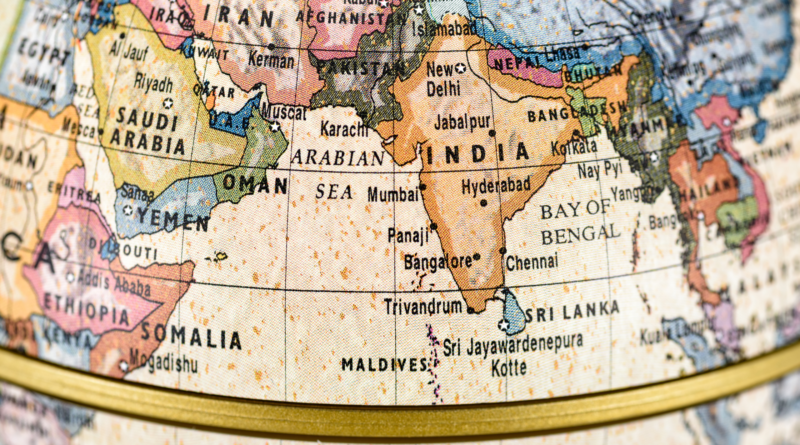Crisis in South Asia
The South Asia region has been in the news this May due to various countries facing the worst economic crisis – staggering inflation resulting in internal strife and protests. Sri Lanka and Pakistan in particular have attracted much of the international attention due to their worsening economic conditions, falling currencies and looming debt defaults. Nepal has also been facing similar economic difficulties, but the situation appears to not be as alarming as in Sri Lanka or Pakistan.
Both countries have seen changes in their respective governments – Sri Lanka has to do it under intense public pressure, the change in Pakistan was due to a changing political landscape with almost all opposition parties forming an informal alliance which more or less appears to have been formed due to its dwindling financial conditions.
The downfall of Sri Lanka’s economy has been swift and painful, with imports of everything from milk to food to fuel having stopped due to shortages of foreign currency (mainly US Dollars), creating serious food shortages and massive power cuts. Doctors have warned of a crippling shortage of life-saving drugs in hospitals, and the government has suspended payments on $7 billion in foreign debt due this year alone.
Pakistan, with retail inflation of over 12.7% in March 2022, is in no better condition. Its forex reserves, below US$ 10.5 billion, are barely sufficient to cover its imports for the next two months. Persistent borrowing over the years has negatively impacted the economic potential of the country, making it more vulnerable to economic shocks. From July 2021 to March 2022, its currency depreciated by 14.3 percent against the US dollar.
While the pandemic has undoubtedly created financial stress across the world. Various countries are facing shortfalls in resources and are struggling to meet the extra burden caused by Covid 19. The situation has been more concerning for the countries which are mainly dependent on tourism, which were worst affected as tourist flow stopped completely during this period, creating havoc with their respective economies and leaving a large part of their population to fend for themselves.
More than 50 countries across the world are currently estimated to be facing the Debt-Crisis situation. However, one significant differentiator for the worsening situation in Sri Lanka and Pakistan has been their heavy dependence on debts – mainly from China. For years, China has been lending money to countries of its strategic interest, irrespective of any regard to their ability to service such debts. It is also believed that such loans from China often come at higher economic and political costs and with conditions such as higher interest costs, holding the project assets as collaterals for Chinese debt as well as claiming preference in repayment over other sovereign creditors, thereby compromising the creditor country’s ability to raise funds from alternate sources in future.
Another view in circulation is that the debt is not the only reason for the current situation in Sri Lanka and Pakistan. Experts believe that economic mismanagement and populism practiced in these countries during previous years is much to be blamed for their current plight. In Sri Lanka, the Rajapaksa Government reduced taxes in 2019, cutting its tax base by 30%, resulting in the tax-to-GDP ratio dropping by a third in three years and the budget deficit soaring to 14% of GDP, leading to lower credit ratings and a foreign exchange crisis. Its economy shrank by over 3.6% in 2020, mainly due to the pandemic. The ADB “Outlook 2022” report states that the “declining government revenue, significant external debt servicing, low foreign exchange reserves, and downgrades to the country’s sovereign credit ratings further weighed on growth, as did severe shortages of essentials and inflationary pressures” in Sri Lanka.
Pakistan, often referred to as the Loan Addict has much older history of economic mismanagement. With projected fiscal deficit of 6.3 percent of GDP for FY 2022, the World Bank in its recent “Pakistan Development Update” states that “long-standing structural weaknesses of the economy including low investment, low exports, and low productivity growth pose risks to a sustained recovery”.
While the jury is out on what exactly led to the crisis being faced by these two (and many other) countries, it is certain that with the ongoing crisis caused by Russia’s invasion of Ukraine, there is no immediate hope of recovery for the world economy. If anything, it remains to be seen as to how many more such crises will develop in the coming days, weeks and months as the war is expected to cause, among others, a severe food grain and energy shortage and thus creating huge inflationary pressure the world over.





I love what you guys tend to be up too. This type of clever work and exposure! Keep up the terrific works guys I’ve added you guys to my blogroll.
You got a very good website, Gladiola I detected it through yahoo.
I went over this web site and I believe you have a lot of excellent information, saved to favorites (:.
Hey there just wanted to give you a brief heads up and let you know a few of the pictures aren’t loading correctly. I’m not sure why but I think its a linking issue. I’ve tried it in two different internet browsers and both show the same results.